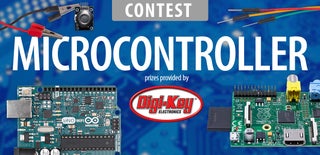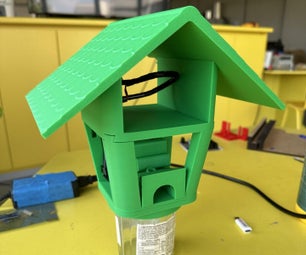Introduction: Binary Converter
Hello there.
The idea to do such converter came to my buddy. He does come electronic classes, and sometimes students need to convert some numbers from BINARY to HEX and DEC. This is exactly what this converter does. Device has 8 toggles togglesand two screens. By turning toogles you set 1 or 0, first screen (with two seven-segment displays) shows you input number in HEX numeral system, second screen (with three seven-segment displays) shows you the same number in DEC numeral system.
Step 1: Drawing
As usual, everything starts with sketches and drawings.
There was an idea to make such a device in Shild format for Arduino. But the goal was to make the circuitry as simple as possible, that is, by Arduino to use not any additional chips.
Was first made a sketch of the case of the future device and paper.
This form factor was chosen based on restrictions on the production of printed circuit Board - A4 size.
There was no task of making the device mobile, as it will be used in the classroom during classes on electronics.
Step 2: PCB
The popular Toner Transfer Method was used to manufacture the PCB, which imposed a limitation on the maximum card size - in the A4 sheet format.
For layout of the board was used the program Sprint Layout, in which was drawn the layout of all the tracks of the board.
Next was a printed file with the layout on a laser printer. To print you must use special paper. After that, the pattern of the tracks is transferred from the printing on the sheet of the PCB using a hot iron, in our case used hot press - which in normal times is used for applying appliques on t-shirts.
One sheet of A4 contained 3 pieces of boards. The boards were cut by Dremel manually. Transition holes were drilled on the machine.
Step 3:
Step 4: Soldering
List of components:
arduino uno x1
seven-segment indicator, dual (common anode) х1 - https://www.chipdip.ru/product/bl-d56b-21ur
seven-segment indicator, single (common anode) х3 - https://www.chipdip.ru/product/bl-s56a-11ur
led х8 - https://www.chipdip.ru/product/bl-l513lrd
toggle switch х8 - https://www.chipdip.ru/product1/8237196151
resistor 220Ом х15 - https://www.chipdip.ru/product0/11057
comb 6pin х2 - https://www.chipdip.ru/product/tyco-826629-3
comb 8pin х2 - https://www.chipdip.ru/product/tyco-826629-4
Soldering accessories
During soldering, it is necessary to pay attention to the order of connection of toggle switches to the Arduino 0-7 terminals, in order to ensure correct display of bits.
Step 5: Coding
The sketch was written in the Arduino IDE.
To manage the 7-segment indicators, the dynamic indication algorithm was adopted, which allowed to connect all the necessary components without using additional microcircuits, shift registers, etc.
See the sketch in the attachment.
Step 6: Case Modeling
After board was finished, came the stage of modeling of the body.
3D model was drawn in Fusion 360.
Next, using add-on DXF for the Laser to make patterns of the parts for subsequent fabrication.
Live preview - http://a360.co/2pup2tH
Attachments
Step 7: Fabrication
The body parts were cut on a laser cutter.
Since there have been a number of printed circuit boards, for each device, we decided to use different material for manufacturing body parts.
Thickness of material 3 mm.
Used: plywood, acrylic.
Step 8: Assembling
After all parts were ready, it was time to assemble the device.
Because the devices used by different clones of the Arduino Uno (the boards are slightly different in size), a few details had to modify a file, as power ports and USB soldered on different boards at different tension - a difference of about 1-2 mm.
The rest all without problems, thanks to the finger joints connections they seem fine without glue.
Step 9: Result
The result is a 3 device.
When choosing colors for the plastic case we were inspired by the design of vintage computer Altair 8800. In our humble opinion - we managed to create a device similar in spirit to that time.
P.S.
If someone wants to talk about retro computers, there is HAM radio callsign - R2DGO, of my buddy Prokhor, together with whom I did this project.

Participated in the
Microcontroller Contest 2017











